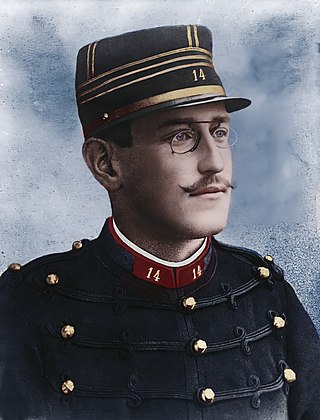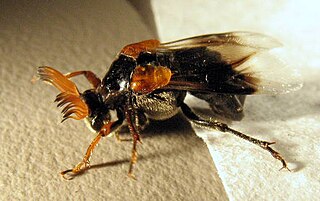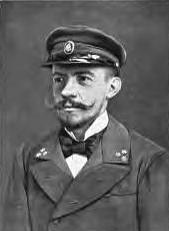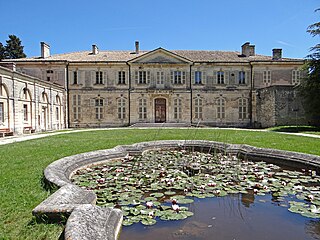1898 (MDCCCXCVIII) was a common year starting on Saturday of the Gregorian calendar and a common year starting on Thursday of the Julian calendar, the 1898th year of the Common Era (CE) and Anno Domini (AD) designations, the 898th year of the 2nd millennium, the 98th year of the 19th century, and the 9th year of the 1890s decade. As of the start of 1898, the Gregorian calendar was 12 days ahead of the Julian calendar, which remained in localized use until 1923.

The Dreyfus affair was a political scandal that divided the Third French Republic from 1894 until its resolution in 1906. L'Affaire Dreyfus has come to symbolise modern injustice in the Francophone world; it remains one of the most notable examples of a complex miscarriage of justice and antisemitism. The role played by the press and public opinion proved influential in the conflict.

Édouard Adolphe Drumont was a French antisemitic journalist, author and politician. He initiated the Antisemitic League of France in 1889, and was the founder and editor of the newspaper La Libre Parole. After spending years of research, he synthesised three major types of antisemitism. The first type was traditional Catholic attitudes toward the alien "Christ killers" augmented by vehement antipathy toward the French Revolution. The second type was hostility toward capitalism. The third type was so-called scientific racism, based on the argument that races have fixed characteristics, and asserting that Jews have negative characteristics.

Wingles is a commune of the Pas-de-Calais department in the Hauts-de-France region of France.

Beaux-Arts architecture was the academic architectural style taught at the École des Beaux-Arts in Paris, particularly from the 1830s to the end of the 19th century. It drew upon the principles of French neoclassicism, but also incorporated Renaissance and Baroque elements, and used modern materials, such as iron and glass. It was an important style in France until the end of the 19th century.

A voiturette is a miniature automobile.

The Baroque Revival, also known as Neo-Baroque, was an architectural style of the late 19th century. The term is used to describe architecture and architectural sculptures which display important aspects of Baroque style, but are not of the original Baroque period. Elements of the Baroque architectural tradition were an essential part of the curriculum of the École des Beaux-Arts in Paris, the pre-eminent school of architecture in the second half of the 19th century, and are integral to the Beaux-Arts architecture it engendered both in France and abroad. An ebullient sense of European imperialism encouraged an official architecture to reflect it in Britain and France, and in Germany and Italy the Baroque Revival expressed pride in the new power of the unified state.

A colonial empire is a collective of territories, either contiguous with the imperial center or located overseas, settled by the population of a certain state and governed by that state.

Ripiphoridae is a cosmopolitan family of some 450 described species of beetles sometimes called "wedge-shaped beetles". Ripiphoridae are unusual among beetle families in that many species are hypermetamorphic parasitoids, an attribute that they share with the Meloidae. Members of the family differ in their choice of hosts, but most attack various species of bees or wasps, while some others attack cockroaches or beetles. Many species of Ripiphoridae have abbreviated elytra, and flabellate or pectinate antennae.
Events from the year 1821 in France.
Events from the year 1824 in France.
Françoise "Adine" Masson was a French tennis player at the end of the 19th century and beginning of the 20th century. The daughter of Armand Masson, the founder of the Tennis Club de Paris, in 1897 she became the first winner of the French Tennis Championship beating Suzanne Girod in two sets. She also won the championship in 1898 and 1899 because there was no opposition and in 1902 and 1903 against Girod and Kate Gillou respectively. In 1907 she won the inaugural French doubles championships partnering Yvonne de Pfeffel.

Ernobius is a genus of beetles in the family Ptinidae. There are about 90 species. Most occur in North America, Europe, and North Africa.

Thorictus is a genus of beetles in the family Dermestidae, containing the following species:
Metophthalmus is a genus of beetles in the family Latridiidae, containing the following species:
Stenalia is a genus of beetles in the family Mordellidae. It contains the following species:

Georges Lecointe was a Belgian naval officer and scientist. He was captain of the Belgica and second-in-command of the Belgian Antarctic Expedition, the first to overwinter in Antarctica. After his return to Belgium he was the founder of the International Polar Organization and deeply involved in the foundation of the International Research Council and the International Astronomical Union.
Chloropterus is a genus of leaf beetles in the subfamily Eumolpinae. It is distributed in Eastern Europe, West to Central Asia and North Africa.

Jean-Baptiste Franque was a French architect. He was the father of François II Franque and Jean-Pierre Franque, also architects, and therefore the father-in-law of the architect Esprit-Joseph Brun.
Alfred Chobaut was a French physician and entomologist. He collected especially beetles from Europe and northern Africa and described many new species. His son Hyacinthe Chobaut (1889-1950) was a noted archivist.











